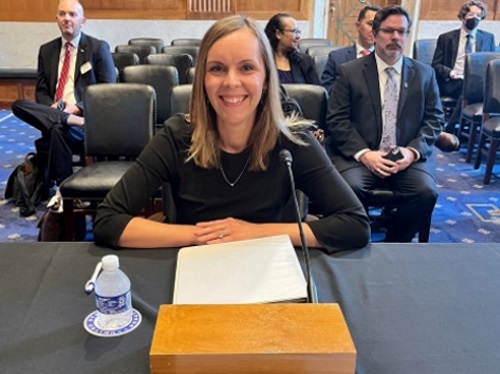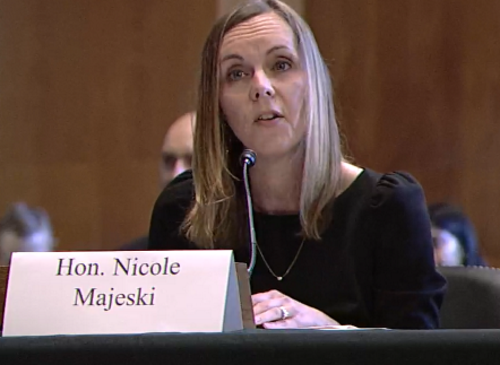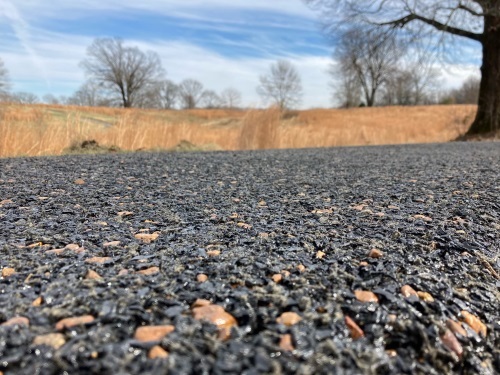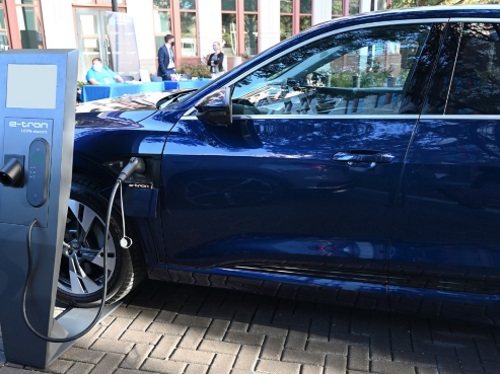FEDERAL ACTION
AASHTO Comments on ‘Buy America’ EV-Focused Waiver – AASHTO Journal
Delaware, California Launch New Litter Cleanup Efforts – AASHTO Journal
Supreme Court to hear high-stakes challenge to Clean Water Act – Washington Post
Bipartisan group of senators press Buttigieg on overdue tourism infrastructure plan – The Hill
Historic Step: All Fifty States Plus D.C. and Puerto Rico Greenlit to Move EV Charging Networks Forward, Covering 75,000 Miles of Highway – FHWA (media release)
COVID-19
Transport Canada to Remove All COVID Restrictions From October 1 – Travel Agent Central
Public Transportation Ridership Rises to More than 70 Percent of Pre-Pandemic Levels – American Public Transportation Association (media release)
INFRASTRUCTURE RESILIENCE AND SUSTAINABILITY
Illinois DOT weighing EV tax to offset gas tax revenue loss – WTVO-TV
Remnants Of Hurricane Ian Will Test North Carolina DOT’s New Flood Early-Warning System For Roads – Charlotte Observer
Electric School Buses Aid Power Grid in Moments of Need – Government Technology
Hertz is teaming up with oil giant BP to install thousands of EV chargers in the U.S. – CNBC
Port of Albany passes on federal funding for wind project – WNYT-TV
AIR QUALITY
New Mexico to be Part of ‘Clean Freight Corridor’ – Transport Topics
Exxon’s Long-Shot Embrace of Carbon Capture in the Houston Area Just Got Massive Support from Congress – Inside Climate News
NY proceeds with plan for zero-emission vehicles by 2035 – AP
‘It makes climate change real’: How carbon emissions got rebranded as ‘pollution’ – Grist
ENVIRONMENTAL JUSTICE
People of color are as interested in buying electric cars as white consumers – the biggest obstacle is access to charging – The Conversation
As Self-Driving Cars Hit the Streets, New Equity Concerns Emerge – Route Fifty
Advocates say speed-limiting tech in new cars could address gender disparity in crash statistics – Cox Media Group Washington Bureau
EPA Finalizes Environmental Justice Action Plan for Land Protection and Cleanup Programs – EPA (media release)
NATURAL RESOURCES
Beachwalk and trees fall into the ocean due to erosion at popular Maui beach
Beachwalk and trees fall into the ocean due to erosion at popular Maui beach
Winter swells could bring back beach, but long-term fix elusive – Maui News
CULTURAL RESOURCES
Infrastructure Law Sends $1.1 Million To National Park Service For Transportation Needs – National Parks Traveler
Dual-Language Highway Signs Unveiled By Oneida Nation, Wisconsin DOT – WITI-TV
HEALTH AND HUMAN ENVIRONMENT/ACTIVE TRANSPORTATION
Transportation “Insecurity” Increasing Among Americans – AASHTO Journal
Grappling With the Traffic Safety Crisis – National Conference of State Legislatures (podcast)
NYC Proposal Offers Cash for Spotting Parking Violations in Bike Lanes – CityLab
Maryland transportation authorities celebrate “Walktober” by promoting pedestrian safety – WJZ-TV
‘We’re about 20 years behind’: Improving bike and pedestrian safety in the City of Omaha – KMTV-TV
New Jersey lawmakers want to study goal of zero traffic deaths by 2035 – New Jersey Monitor
Push for suicide prevention barriers on Taft Bridge prompts DDOT review of all DC bridges – WJLA-TV
Flint hosts workshop about becoming more bicycle friendly – WJRT-TV
Las Vegas Isn’t a City for Pedestrians, But We Could Make It One – Las Vegas Weekly (commentary)
SEPTA Offers New Way For Customers To Report Cleanliness Issues on System – SEPTA (media release)
TRB RESOURCES/ANNOUNCEMENTS
The Era of Smart Infrastructure Demands Strong Data, Technology Management – TRB
Safer Intersections for Pedestrians and Bicyclists – TRB (webinar)
FEDERAL REGISTER NOTICES
Airport Terminal Program; FY 2023 Funding Opportunity – FAA (Notice of funding opportunity)
Announcing Two Virtual Public Outreach Events – Coast Guard (Notice of outreach events)








